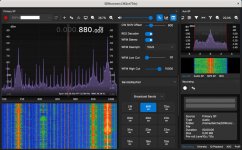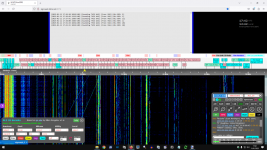rkillins
Member
In my younger years, I used to get great satisfaction tuning into SW/HF stations with my Radio Shack DX-390 (look that one up!!). I can only imagine what I would have got from it with investment beyond just it's stock antenna. (I was only in my early teens and Burger King wages didn't cut it). I replaced SW listening with local VHF scanning with a Pro2006, and found greater satisfaction of being able to program and scan known frequencies vs manually tuning a dial for hours hoping to capture a SW signal.
40 years later, and the loss of satisfaction with local scanningt now, I'm wondering if there is still any satisfaction in scouring the SW/HF radio waves again for interesting finds. From what I can recall from SW/HF/MF monitoring is capturing signals was a skill knowing when and where to look with highly refined equipment, frequencies were rarely static, and you couldn't "scan" known frequencies.
How much am I off in my understanding of monitoring these bands (looking specifically for utility stations)? Is it worth getting into, or would I find myself highly disappointed, frustrated and potentially broke pensioner?
Any advice, resources on how to get get (back) into this hobby?
40 years later, and the loss of satisfaction with local scanningt now, I'm wondering if there is still any satisfaction in scouring the SW/HF radio waves again for interesting finds. From what I can recall from SW/HF/MF monitoring is capturing signals was a skill knowing when and where to look with highly refined equipment, frequencies were rarely static, and you couldn't "scan" known frequencies.
How much am I off in my understanding of monitoring these bands (looking specifically for utility stations)? Is it worth getting into, or would I find myself highly disappointed, frustrated and potentially broke pensioner?
Any advice, resources on how to get get (back) into this hobby?



